Jews and the Left by Philip Mendes: A Review — Part 2
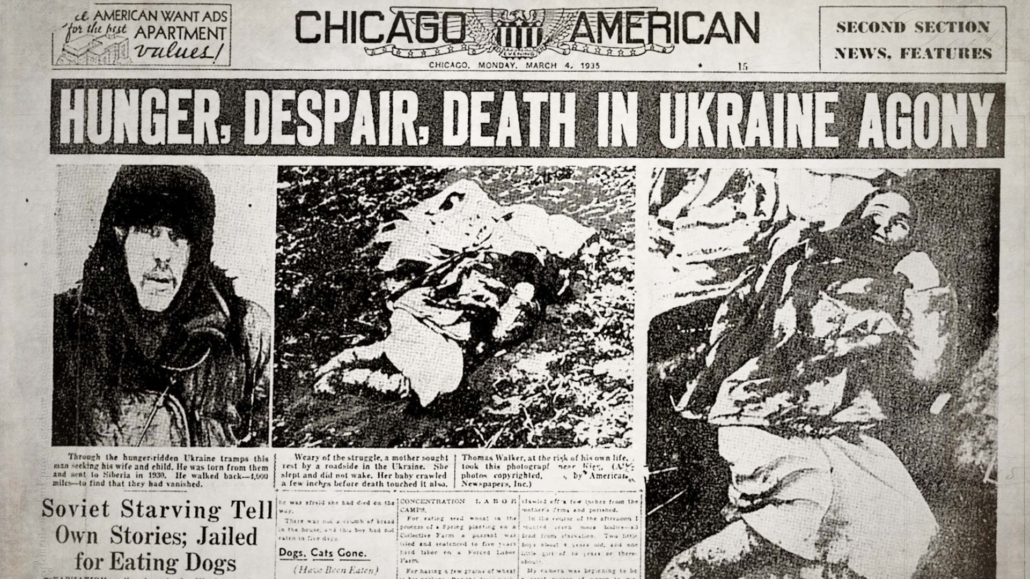
Denying the Jewish role in the Ukrainian famine
Mendes sees a revival of “the Judeo-Communist theory” in Australian author Helen Darville’s 1994 novel, The Hand That Signed the Paper, which posited that the collaboration of some Ukrainians with the Germans in World War II could be attributed to the role played by Jewish Bolsheviks in imposing the genocidal Ukrainian famine of the 1930s. For Darville’s central characters, anti-Jewish massacres were understandable revenge for earlier Jewish actions. For Mendes, Darville’s book provides a “classic example of the way in which the Judeo-Communist theory both reverses the cause and effect of anti-Semitism and communism, and acts as a self-fulfilling prophecy. … In short, it provides no explanation of the factors that drove many Jews to join the socialist movement. The historical context of anti-Semitism creating Jewish sympathy for Bolshevism is simply omitted.”[i] This is a disingenuous analysis given Mendes’ own gross misrepresentation of the context for Ukrainian anti-Jewish sentiment (i.e., casually dismissing centuries of economic predation).
In Jews and the Left, Mendes even asserts that “the argument that Jews as an ethnic group or even Jews as individual Bolsheviks played a significant role in the Ukrainian famine lacks any concrete evidence.”[ii] He evades discussion of the role of the Jewish Soviet leader in the Ukraine, Lazar Kaganovich, in overseeing the forced collectivization of 1932–33, conceived as part of an “assault on the Ukrainian nationalist intelligentsia.” The country was sealed off and all food supplies and livestock were confiscated, with Kaganovich leading “expeditions into the countryside with brigades of OGPU troopers” who used “the gun, the lynch mob and the Gulag system to break the villages.”[iii]
Similarly omitted is any mention of the role of the Jewish-dominated secret police in the Ukraine led by Genrikh Yagoda (also Jewish) in exterminating all “anti-party elements.” In his book The Jewish Century, Yuri Slezkine notes how “the Soviet Secret Police – the regime’s sacred center, known after 1934 as the NKVD – was one of the most Jewish of all Soviet Institutions.”[iv] Furious that insufficient Ukrainians were being shot, Kaganovich set quota of 10,000 executions a week for his secret police in Ukraine. Eighty percent of Ukrainian intellectuals were shot—the familiar pattern in which communist governments murdered the previously influential intelligentsia and other elites (see Tom Sunic’s “The Dysgenics of a Killing Field”; also a theme of Yuri Slezkine’s The Jewish Century, see here, p. 69). During the winter of 1932–33, 25,000 Ukrainians per day were being shot or left to die of starvation.[v]
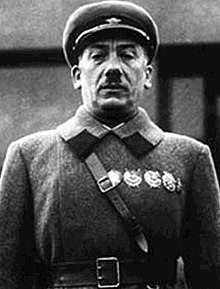
Genrikh Yagoda
Even non-Jewish representatives of the Communist Party in the Ukraine recognized the unmistakable Jewish role in the unfolding catastrophe:
After some moments of hesitation, he [the Party representative] went on explaining that the Jews, generation after generation, had been brought up in the belief that the Ukrainians were anti-Semites, and responsible for the terrible and violent atrocities against them. This the Jews could not forgive nor forget. They know how to take revenge. It is a well-known fact, he continued, that the Jews, using the Communist Party as a springboard for their ambitions, have penetrated all branches of central and local governments, especially such branches as security and justice. Our local GPU, he pointed out, was entirely in their hands. They have been using these official positions for their own benefit. The Communist Party, announcing the policy of total collectivization and liquidation of kurkuls, had entrusted the local governments and special party representatives such as Thousanders almost unlimited power. The Jews took advantage of this power to take revenge against Ukrainians. They became overzealous in expropriating the grain from farmers, and causing starvation in Ukrainian villages. More than that, they pinned the labels “kurkul” and “enemy of the people” on the majority of the farmers without any justification and had them exiled to concentration camps and locked up in prisons.[vi]
This Party member’s initial hesitation to discuss the above is attributed to the laws in the Soviet Union which strictly prohibiting “anti-Semitism” where even “the slightest derogatory remark or even a joke that might have been construed as such could have brought severe punishment.”[vii] The famous dissident writer (and Jordan Peterson’s hero), Alexander Solzhenitsyn, devoted three chapters of his book Two Hundred Years Together to the Jewish role in Bolshevism and its mass purges of Soviet citizens. Solzhenitsyn urged Jews to accept “moral responsibility” for their ethnic kinsmen who “took part in the iron Bolshevik leadership, and, even more so, in the ideological guidance of a huge country down a false path.” He called on Jews to repent for their role in “the Cheka executions, the drowning of the barges with the condemned in the White and Caspian Seas, collectivization, Ukrainian famine – in all the vile acts of the Soviet regime.”[viii] While no authorized English translation of Two Hundred Years Together has ever appeared, the field of Soviet history, including of the Ukrainian famine, has lately been dominated by the work of Anne Applebaum, a Jewish-American journalist, who inevitably exculpates her own ethnic group from any prominent role in Soviet atrocities. Her work has been showered with awards and praise by our hostile elite.
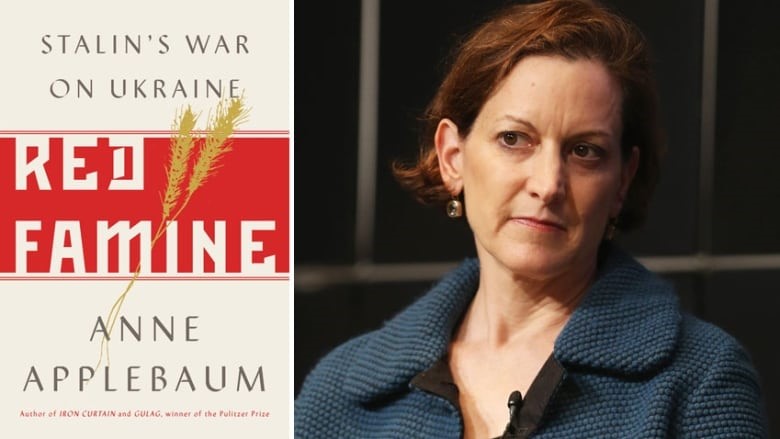
Poland
Alongside the Ukraine, Mendes claims the “Jew-equals-communist stereotype (Zydokomuna) was particularly virulent in Poland.”[ix] In the early years of the independent Polish state, including the unsuccessful invasion by Trotsky’s Red Army (1918–20), Polish anti-Jewish sentiment was activated by the large number of Jews who collaborated with the Soviet Army. Jewish membership of the Polish Communist Party fluctuated between 22 and 35 percent of the total. Jews were even more heavily represented in the party leadership: in 1935 they constituted 54 percent of the “field leadership” and 75 percent of the technika (responsible for propaganda).[x]
Matters came to a head during the Soviet invasion and occupation of Eastern Poland in 1939–41. Jews welcomed the Soviet presence, enjoyed a close relationship with the Soviet occupiers, and played a disproportionate role in the short-lived Soviet administration and police, including those responsible for the mass deportations of Poles to exile or death in the Gulag. According to Mendes, the enthusiastic collaboration of Jews with the Red Army “was driven by anxiety and fear and a feeling of relief rather than pro-communist sentiments, and may have also been influenced by their negative experiences under Polish rule.” He insists that Polish memories of the “alleged collaboration” of Jews with the Soviet Union were “influenced by pre-existing stereotypes of Jewish-communism” rather than their actual experiences. Most of the evidence of substantial collaboration appears “to be impressionistic and exaggerated, rather than based on formal documentation. … What cannot be doubted is that Poles deeply resented the positions of authority that some Jews (regardless of number) enjoyed under Soviet rule.”[xi]
The Muscovites
Jews enjoyed unparalleled power and prestige within the Soviet establishment of the 1920s and 1930s. They were equally prominent as party leaders and functionaries, and particularly as members of the security police, in the immediate post-war communist regimes in Eastern and Central Europe. Mendes notes how the “early prominence of Jews in these communist governments mirrored the rise of many Jews to powerful positions in the early Soviet Union.”[xii] These Jews were commonly known as Muscovites because they had spent the war in Moscow, were known for their loyalty to Stalin, and returned to their countries of origin in the wake of the conquering Red Army. These Jewish communist cadres were systematically entrusted with the most senior positions in the army, the diplomatic corps, economic management, and especially the security police.
In Hungary the five leading figures of the communist government—Mátyás Rákosi, Ernest Gero, Mihaly Farkas, Zoltan Vas and Jozsef Revai—were Jewish. Jews were also prominent in other Communist Party and government institutions, and constituted at least a quarter of the security police.[xiii] The conspicuous role played by Jews in the brutal Sovietization of Hungary led to anti-Jewish riots in 1946. The oppressive nature of the new regime can be gauged by the fact that between 1952 and 1955 “the police opened files on over a million Hungarians, 45 percent of whom were penalized,” and “Jews were very salient in the apparatus of repression.”[xiv]
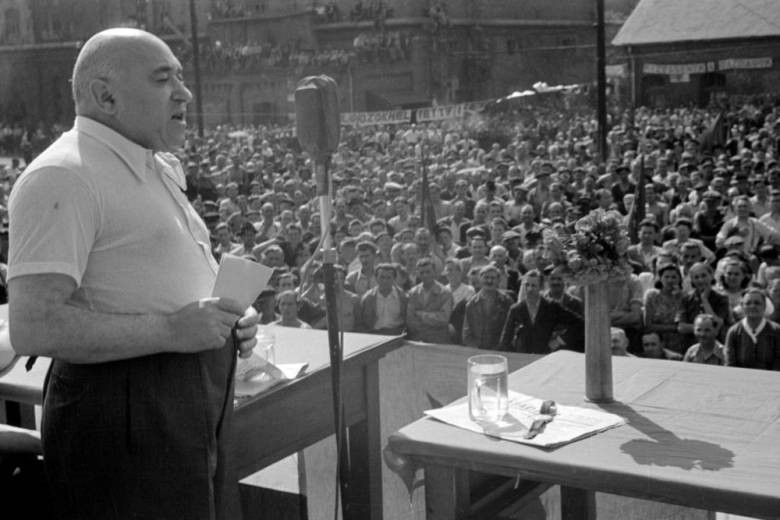
Mátyás Rákosi
In Czechoslovakia, Jews Rudolf Slánský was Secretary-General of the Communist Party, Josef Frank deputy Secretary-General, and Stefan Rais Minister for Justice. Other Jews held powerful positions in the Ministries of foreign affairs, foreign trade, planning and propaganda.[xv] Ana Pauker was the Foreign Minister of Romania, Secretary of the Communist Party, and arguably the most powerful person in the communist government there. Other Jews, including Iosif Chisinevski, Leonte R˘autu, Simion Bughici, Ana Toma, and Mihail Roller, also held prominent roles in the Romanian Communist Party. A significant number of Jews held positions in the leadership of the secret police. Jews were likewise prominent in the East German Party leadership, among them Albert Norden, Hermann Axen, Alexander Abusch and Gerhard Eisler.
In Poland, thousands of Jews “subsequently attained government positions in the new communist government, and many appear to have held leading roles in the Ministry of Public Security.” Two Jews, Jakub Berman (responsible for secret police and propaganda) and Hilary Minc (economic planning), held the second and third leading positions respectively in the government. Other significant Jewish figures included the Secretary of the Central Committee, Roman Zambrowski, the head of Public Security, Anatol Fejgin, and his deputy, Józef ´Swiatło, the head of the Department of Investigations, Jacek Ró˙za´nski, and his deputy, Adam Humer, and Julia Brystiger, who controlled the secret police department investigating the Catholic Church.[xvi]
Jews were deliberately placed in key positions because the Soviet authorities feared a resurgence of nationalism in the countries they now occupied. Jews were seen as least likely to form an alliance with the local populace against the hegemony of the Soviets, as Tito had done in Yugoslavia. Mendes notes how “these Jews were loyal communists who could be relied on to introduce unpopular policies and defend Soviet interests amidst hostility from the nationalist intelligentsia. They were often highly educated and able to speak foreign languages, which made them valuable assets in areas such as propaganda, education, and foreign affairs and trade.”[xvii]
In the newly conquered nations of Eastern and Central Europe, the Soviets had few reliable supporters, and because they were familiar with local conditions and “fanatically antifascist,” Jews were often chosen for the security police.[xviii] Desire for ethnic revenge was an unmistakable motivation for the many Jews who flooded into the ranks of the security police, who viewed “the new political regimes as an opportunity to take revenge on those who had killed their family and friends, and/or prevent a repeat of pre-war anti-Semitism.”[xix] The Soviet authorities knew that the population of these countries was strongly anti-Jewish, so they tried to conceal the fact that there were Jews in leading positions, and Mendes observes that:
concerns about the conspicuousness of Jewish communists were aired from time to time both by the Soviet Union and by the Jews themselves. For example, Ana Pauker refused to take the leadership of the Romanian Party on the grounds that the people would not accept a Jewish woman as leader. Both Rákosi and Gero actively discouraged the prevalence of Jews in Hungarian communist groups due to their fear that it would alienate other potential sources of support, such as the peasants. Władysław Gomułka, the prominent Polish communist, wrote to Stalin in 1948 complaining that too many Jews had been appointed to leading positions in the Communist Party, and that they lacked an allegiance to the Polish nation. Both the Bulgarian communist leader, Georgii Dimitrov, and the leading Russian Communist, Molotov, advised the new Hungarian communist government to limit the number of Jews in public positions.[xx]
Both the Soviet Union and the local communists were aware of the risk of elevating Jews to power in countries with strong anti-Jewish traditions, and the potentially negative implications for the party. In 1953, Mátyás Rákosi was removed from the Hungarian Party leadership in favor of the non-Jewish Imre Nagy. Later, Khrushchev vetoed the proposed appointment of Zambrowski as Polish Party leader in 1956, commenting that “You have too many Abramoviches in your leading cadres.”[xxi] The reign of the Muscovites was short, and concluded once Stalin identified sufficiently reliable indigenous communists to take their place. The purges of the early 1950s eroded significant Jewish influence in most Eastern European communist parties. By the mid-1950s a generation of Jewish communists had fallen from power. It would not be until after the fall of the Soviet Union in 1991 that a country in Eastern Europe would once again fell under the domination of a group of Jewish oligarchs, and a decade of misery and impoverishment for most of the Russian population followed.
Redefining the ‘Left’
Since the 1960s, and particularly in the post-Cold War era, the Left has progressively abandoned the tenets of orthodox Marxism for a (now corporate-capitalist-backed) Cultural Marxism based on the Critical Theory of the Frankfurt School, which Mendes describes as having “introduced a much more fluid and broad range of ideas that seek to liberate numerous groups beyond those principally disadvantaged by social class.”[xxii] After World War II the Frankfurt School abandoned attempts to appeal to the White working class because they had succumbed to fascism in Germany and Italy. This prompted a rejection of the orthodox Marxist emphasis on class struggle and a new emphasis on non-White identity politics and advocacy of non-White immigration and multiculturalism, as well as recruiting Whites who had complaints against the traditional culture, particularly feminists and sexual minorities, into a new coalition of the Left. Mendes notes that:
the lesson that most Jews worldwide (even radical Jews) drew from the Holocaust was that the great working-class movements of Europe had failed to defend the Jews from genocide, and that any future defense strategy would have to be based primarily on the Jews’ own resources. This disillusionment was encapsulated in the Marxist intellectual Isaac Deutscher’s famous statement that his “confidence in the European labor movement, or more broadly, in European society and civilization … had not (been) justified.” Both Deutscher and the former leader of pre-war Polish Trotskyism, Hersh Mendel, abandoned their earlier opposition to Zionism. Mendel even migrated to Palestine, and became a “proletarian Zionist.”
Jewish despondency concerning the value of internationalist solutions was matched by the failure of postwar Marxists to provide a serious explanation of the Nazi genocide (and the earlier failure of the Left to take Nazi threats against Jews seriously) that might have provided a new political signpost for left-wing Jews. The few that tried (for example the leading Jewish Trotskyist Ernest Mandel) seemed unable to comprehend the singular and unique nature of the Holocaust, the centrality of ideological racism, and the relative absence of economic or other rational grounds such as capitalism or imperialism. The concern to highlight the universalistic implications of the Holocaust precluded an understanding of the particular consequences of anti-Semitism. In short, the specific and ongoing victimization of Jews by far-Right groups and its implications for Marxist theory on Jews as a collective group was never adequately conceptualized.[xxiii]
While the support of working-class Europeans for fascism in the 1920s and 1930s was the most traumatizing of the “sharp disappointments” for Jews wedded to international communism, there were several others. Mendes catalogues some of the other events that prompted Jews to progressively abandon orthodox Marxism, including the communist support for the 1929 anti-Jewish riots in Palestine, the 1936-38 show trials which targeted many Soviet Jews, the 1939 Soviet–Nazi Pact, and Stalin’s anti-Jewish campaign of 1948–53, which adversely affected Jews throughout the Eastern Bloc. Mendes notes that:
Sadly, many Jewish identifying communists were among the leading apologists for a number of these actions by the Soviet Union, which proved to be an enemy rather than a friend of the Jews. Those left-wing Jews not already disillusioned were later confronted by the Soviet Union’s support for the Arab states during the 1967 Six Day War, and the 1968 anti-Jewish campaign in communist Poland. And many younger Jews drawn to left-wing ideas by the Vietnam War were alienated by the pro-Palestinian position adopted by much of the New Left. For some progressive Jews, the final betrayal came as recently as 2000–2003 when sections of the Left celebrated the suicide bombings of the second Palestinian Intifada.[xxiv]
In the pre-World War II period, Jewish intellectuals (not exclusively Marxist) were deeply impressed by the Soviet Union’s outlawing of anti-Semitism, and its creation of a putative Jewish homeland in Birobidzhan. For many, this presented a practical and potentially more viable alternative to Zionism and Palestine. In the first two decades after the Bolshevik Revolution, Jewish communists held an overwhelming faith and trust in the Soviet Union as a protector and ally of Jews. This unqualified support for the Soviet Union was not dissimilar to the uncritical pro-Israel views held by many Jews today. Radical Jews could cite Soviet initiatives and actions which appeared to justify their loyalty, including the fact that the Soviet Union had taken strong measures to eliminate “anti-Semitism,” a crime under the Soviet constitution, and Lenin’s declaration that “anti-Semitism is counterrevolution.”[xxv] They lauded the Soviet Union as “a powerful ally in the world-wide struggle against anti-Semitism.” Leftwing Jews more generally believed that “the international working class could be relied on to defend the civil and political rights of Jews.”[xxvi]
Jewish organizations during the May Day Parade in Petrograd in 1919
A common refrain of Jewish communists in the first two decades after the Bolshevik Revolution was that a successful revolution based on the Soviet model would ensure the protection of Jews all over the world, and Mendes notes how many Jews joined left-wing groups precisely because they were convinced that a socialist victory would bring about a complete end to “anti-Semitism.” For example, Julius Braunthal, a prominent Jewish socialist in Austria, commented:
I think that the structure and spirit of a Socialist society precludes the emergence of anti-Semitism. I believe that in fact Socialism is the only solution of the Jewish problem, in the sense of the emancipation of the Jewish people (as every oppressed people) from any moral or social discrimination or disability.[xxvii]
Given this, Jews were “amongst the strongest initiators and defenders of the Left’s internationalism” and were “arguably the group who stood most to gain from the victory of an international movement which transcended national boundaries, and promoted the universal brotherhood of man.”[xxviii]
Keen to uphold such a narrative, American Jewish radicals were prominent among those who eagerly swallowed the false reports of New York Times’ Moscow correspondent, Walter Duranty, disputing reports of widespread famine in the Ukraine resulting from the forced collectivization of agriculture. Also, despite their avowed “internationalism” most Jewish communists, despite their ostensible ideological anti-Zionism, were strong supporters of the Soviet decision to support the establishment of Israel.[xxix] It was only Stalin’s anti-Jewish campaign of 1948–1953 that finally and permanently disillusioned most Jewish-identifying Marxists, prompting the realization that “they had actually supported a regime which was murderously anti-Semitic rather than philo-Semitic. The nexus between Jews and communism had come to an end.”[xxx] The result was a political mass-migration of Jews from orthodox Marxism into the New Left and Neoconservatism.
[i] Philip Mendes, Jews and the Left: The Rise and Fall of a Political Alliance (Melbourne, Victoria; Palgrave MacMillian, 2014), 227.
[ii] Ibid., 227.
[iii] Myroslav Shkandriij, Jews in Ukrainian Literature: Representation and Identity (Yale University Press, 2009), 137.
[iv] Yuri Slezkine, The Jewish Century (Princeton NJ: Princeton University Press, 2006), 254.
[v] Lesa Melnyczuk, Silent Memories, Traumatic Lives (RHYW, 2013), 25.
[vi] Miron Dolot, Execution by Hunger: The Hidden Holocaust (W.W Norton & Company, 2011), 83.
[vii] Ibid.
[viii] Slezkine, The Jewish Century, 360.
[ix] Ibid., 227.
[x] Bernhard Wasserman, On The Eve: The Jews of Europe Before The Second World War (London; Profile Books, 2012), 63.
[xi] Mendes, Jews and the Left, 229.
[xii] Ibid., 247.
[xiii] Ibid., 244.
[xiv] Ibid. 178-9.
[xv] Ibid., 244-45.
[xvi] Ibid. 245.
[xvii] Ibid., 247.
[xviii] Ibid. 171.
[xix] Ibid., 245.
[xx] Ibid., 247-48.
[xxi] Ibid., 248.
[xxii] Ibid., 5.
[xxiii] Ibid., 235-36.
[xxiv] Ibid., 286.
[xxv] Martin Amis, Koba the Dread: Laughter and the Twenty Million (Vintage Digital, 2013), 217.
[xxvi] Mendes, Jews and the Left, 285-86.
[xxvii] Ibid., 14.
[xxviii] Ibid., 18.
[xxix] Ibid., 271.
[xxx] Ibid., 237-38.

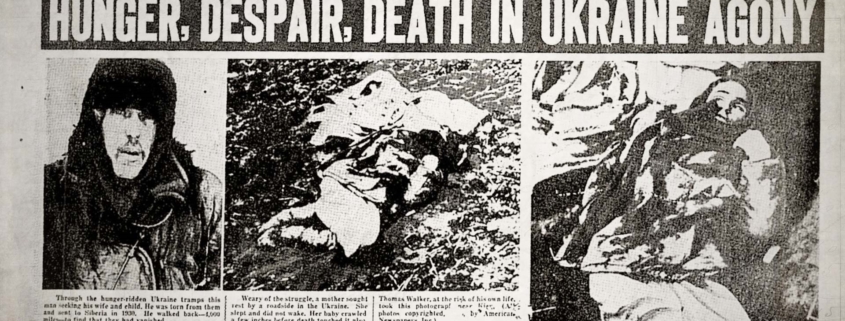




That internationalism cultures Jewish virulence seems to have escaped all scholarly analysis of “the antisemitic cycle”. This is, in part, because it isn’t really an antisemitic cycle but an evolutionary medical cycle involving horizontal transmission. Virulent Jews are heritably incapable of understanding that the more successful they are at centralizing power (one phase of the cycle), the less likely they are to escape the consequences of their virulence because there will be fewer uninfected populations.
This makes very gratifying reading, Dr Sanderson. I remember well the savaging of twenty-three-year-old Helen Darville (Demidenko) for her prestigious prize-winning first novel that made no more than two or three allusions, admittedly neat ones, to the Jewish involvement with communism and its atrocities. Third-rate academic Robert Manne, and a whole lot of other adult men like repulsive career shabbos goy Gerard Henderson, and any number of opportunistic and dependent journalists and publishers, attacked that very lovely, brilliant girl with a blood-lust that defied credulity. Even her Post Modernist routine of adopting the identity of her Ukrainian-girl character, wonderfully well played, had them screeching ‘liar’ at her. And yes: they forced this young writer off the literary scene that has not seen a match for her before or since. No decent person admired the Jews for that. They were pleased with themselves, though. Shameful business.
Lenin: “anti-Semitism is counterrevolution.” That statement says it all, doesn’t it?
It does say a lot, but not all: It is said that Lenin was only one-quarter Jewish. The great Solzhenitsyn thought so too. But it has been said also that the lineage allotted to Lenin is no more than conjecture. A dusty little old man was pulled out of the back of a library in Zurich in time for the Jewish Bolshevik coup in 1917. He became Lenin. Or so we are told. This just does not ring true. Anyway, was not the ‘Bolshevik Revolution’ brewed in New York’s Jewish strongholds?
I agree Sophie. Even if by blood, Lenin was only 1/4 Jewish, that doesn’t mean he didn’t think, act, and practice as a Jew. The same is true for Stalin. Would the tribe really let a goy take control, banish Trotsky, and later purge Jews? He was married to and surrounded by Jews. Would a goy really be given that much control?
On the Holodomor, recognition is long overdue for Gareth Jones, whose reporting, printed in the The Manchester Guardian, was what prompted Duranty’s now notorious denial.
https://emerging-europe.com/after-hours/the-remarkable-story-of-gareth-jones/
Thank you, Trenchant, for introducng Gareth Jones. Yours is my first news of him.
The Jones’ website is a mine of information.
https://www.garethjones.org/manchukuo_incident/reviews.htm
As I have often said, capitalism and communism are the two sides of the Jewish control coin. Both seek to concentrate wealth in the hands of the few, and each determines who is in the commune’s politburo that controls the commune. Once the politburo defines the commune and who benefits, everyone else is chattel of the commune.
Real socialism derived from the Trade Guilds that were systemically dismantled by governments while leaving the Merchant Guilds relatively untouched. The local branches of Trade Guilds were essentially cooperatives. They controlled the numbers of craftsmen and apprentices, production and quality of the product as well as the price. Inflation was virtually unknown. The system had flaws, but worked for hundreds of years. It was the Merchant Guilds that were infiltrated by Jews and eventually controlled. Merchant Guilds were always internationalists. While they depended on Trade Guilds for products for export, their real profit came in selling products, such as spices and tobacco, that were not available in their country.
As has been noted on this site, early socialists were anti-government. French socialist Pierre-Joseph Proudhon referred to Marx as the tapeworm in socialism. Marxism is communism, centralized control of government where the workers owning the means of production means the commne (and by extension what is defined as the commune) owns the means of. Real socialism is the locals who produce the product own the control of production. Real socialism is anti-government and anti-communist. Real socialism would never support an unending line of freeloaders into their collective draining their resources.
Real socialism died decades ago, and the closest models in Scandinavia committed suicide when Denmark joined the EEC and the others went multicultural through the tribe’s lobbying.
There is no perfect system, only systems that would be better without tribal influence.
Very interesting Curmudgeon, about the history of the Trade Guilds. Merchant Guilds vs Trade Guilds, and how as you note, Communism and Capitalism is one coin with both faces ruled by a power elite. I would add that since 1913 Capitalism was replaced with Merchantilism as when the Royal Charter was a Grant to trade in tobacco, sugar and slaves. Capitalism as with the Trade Guilds created the middle class as I see it and now since at least 1913 we have regressed economically.